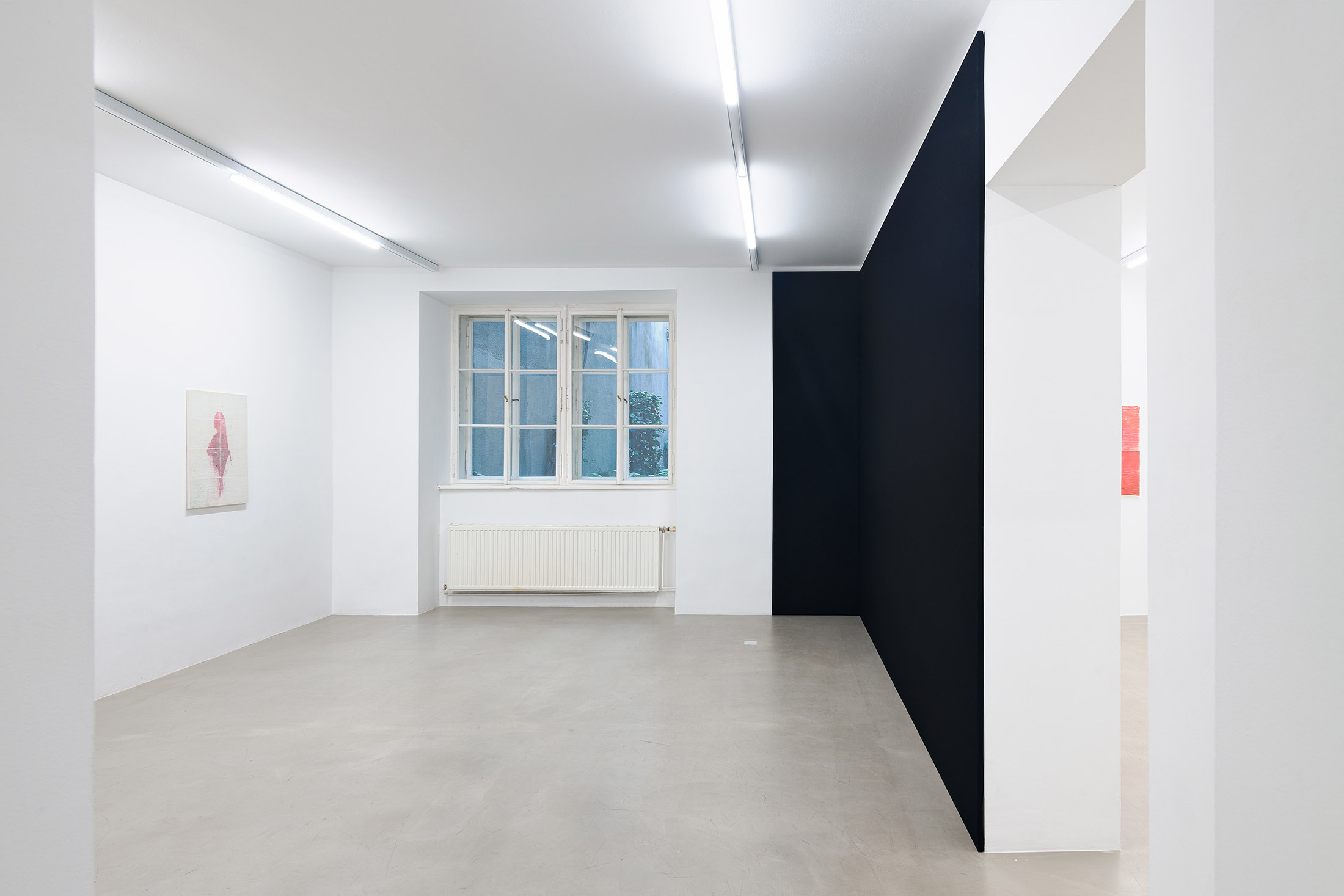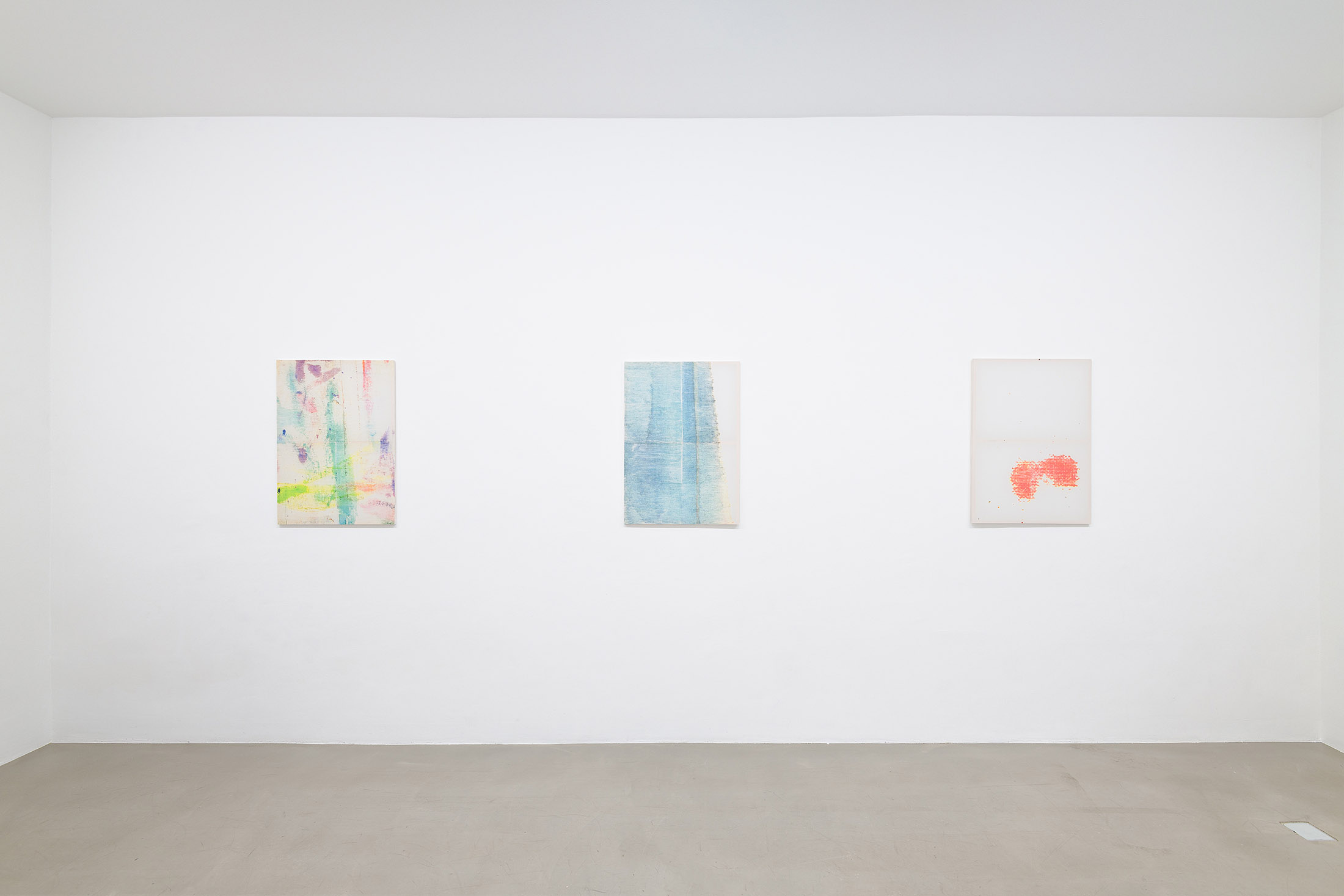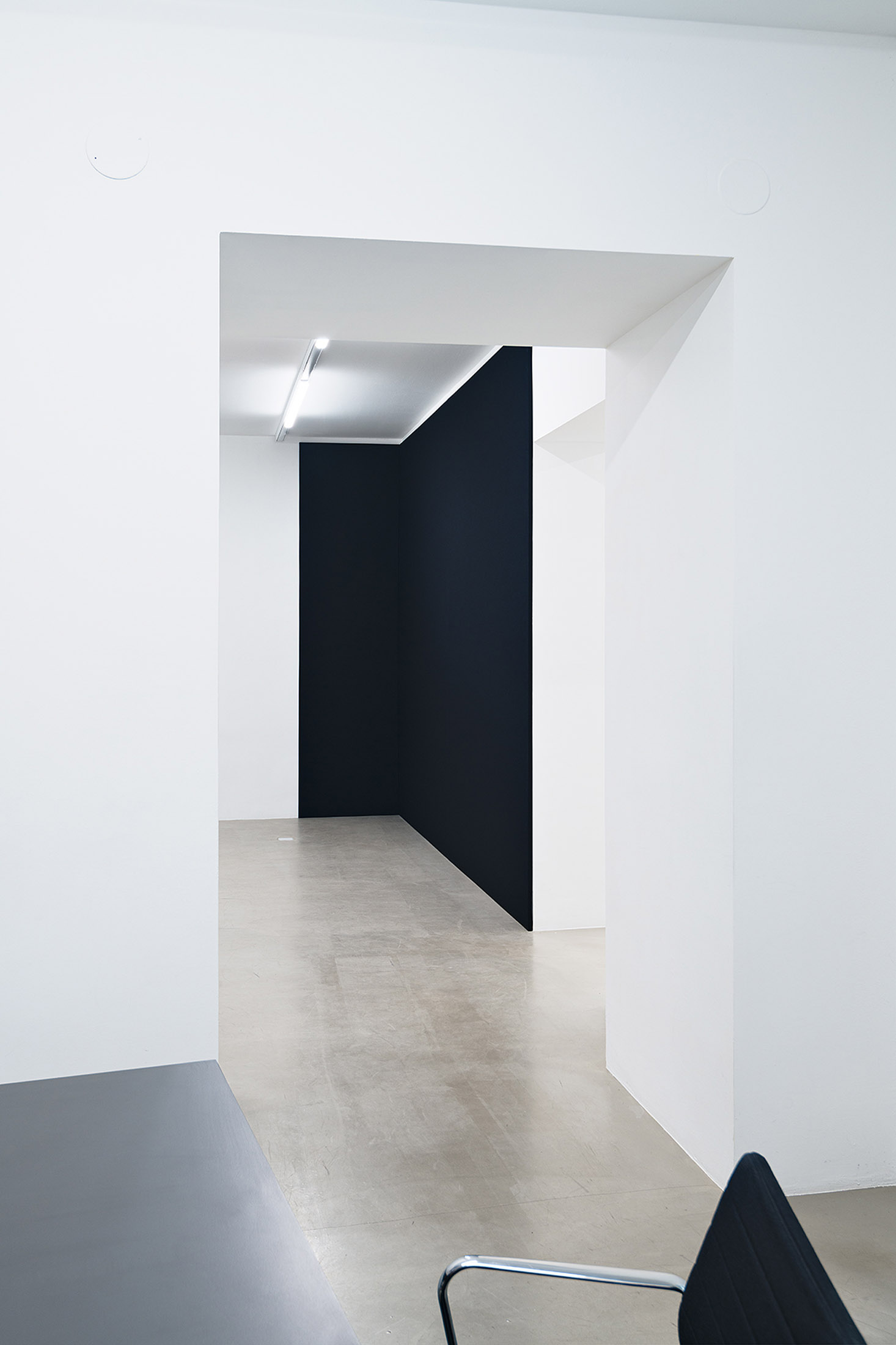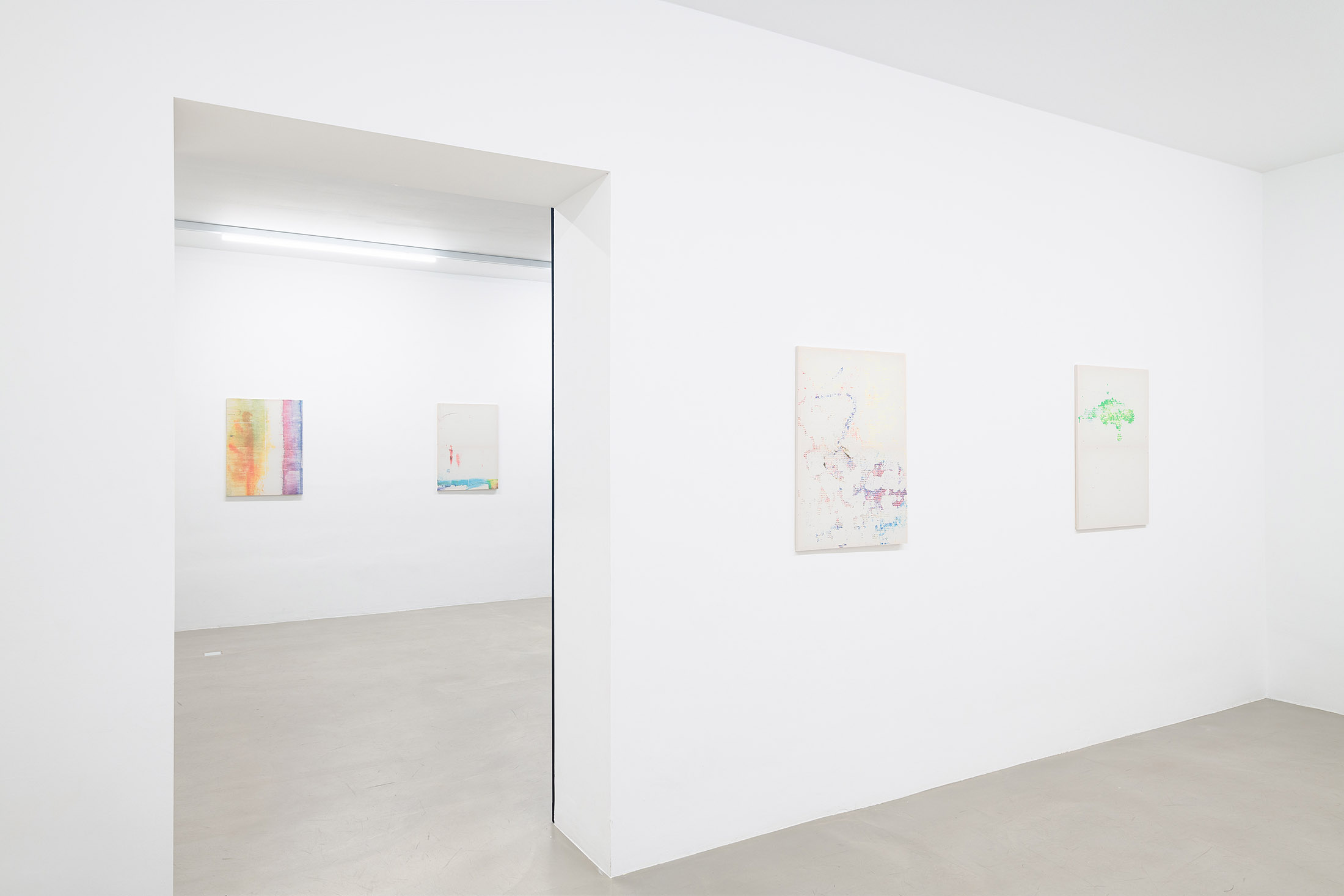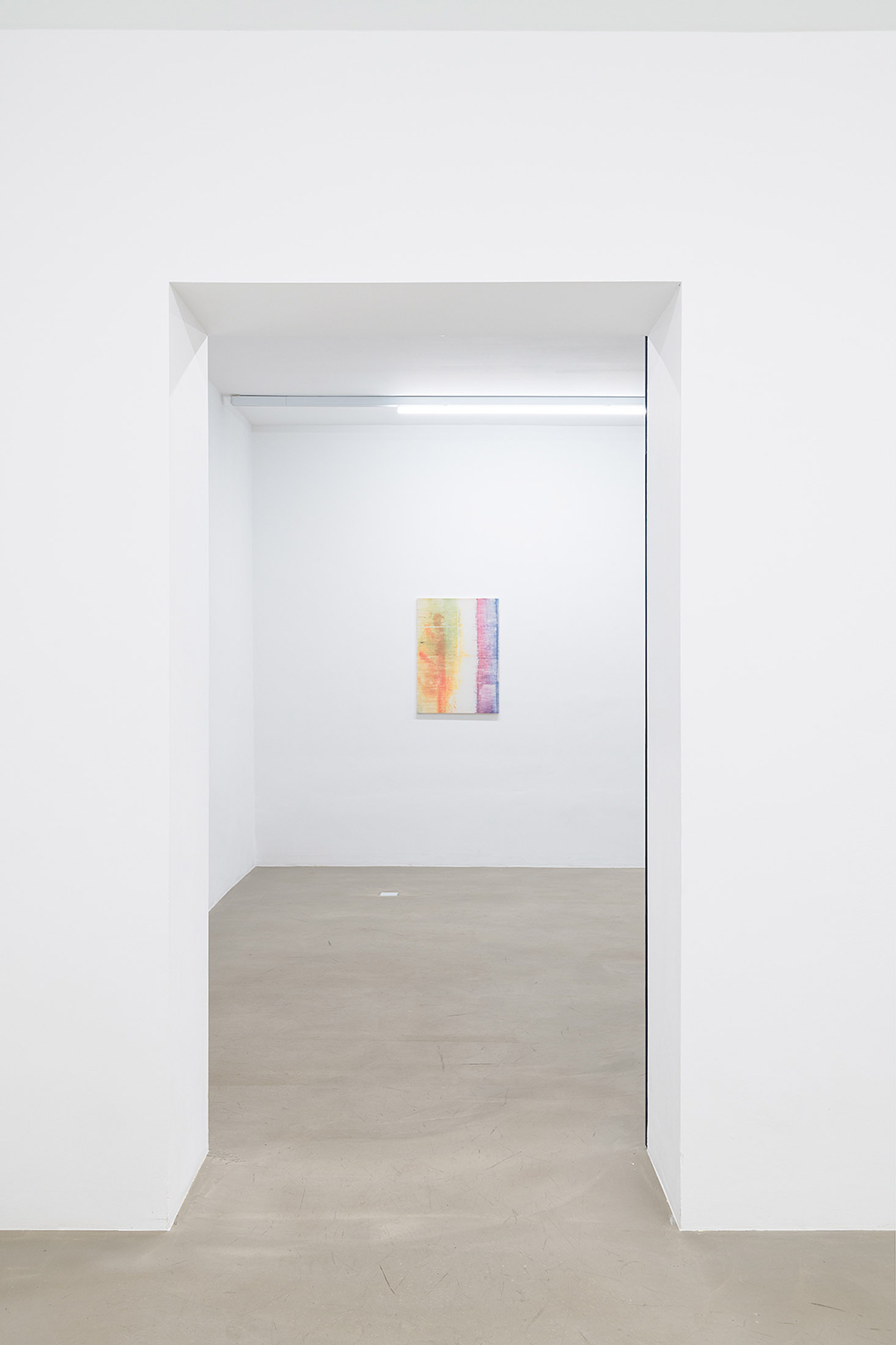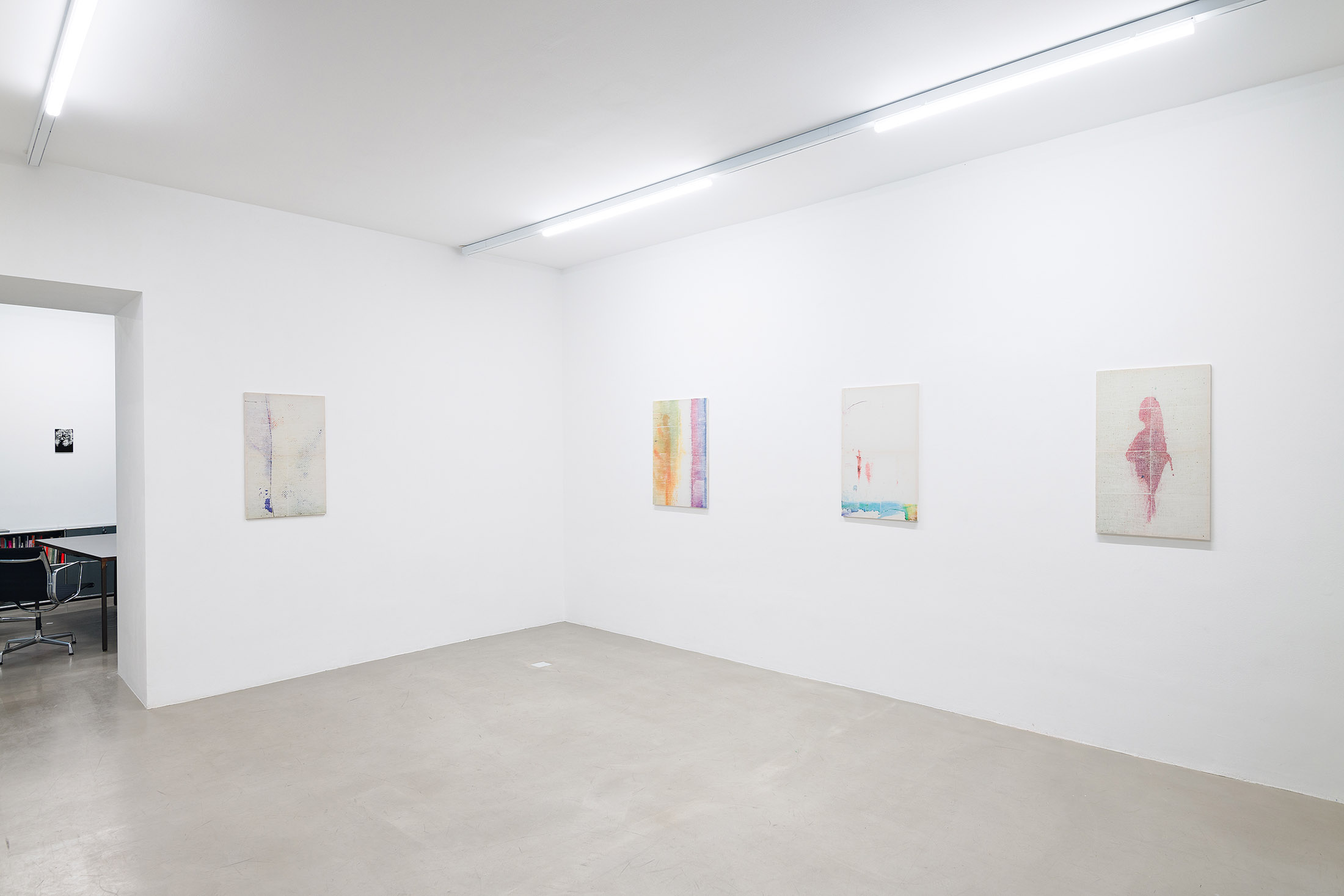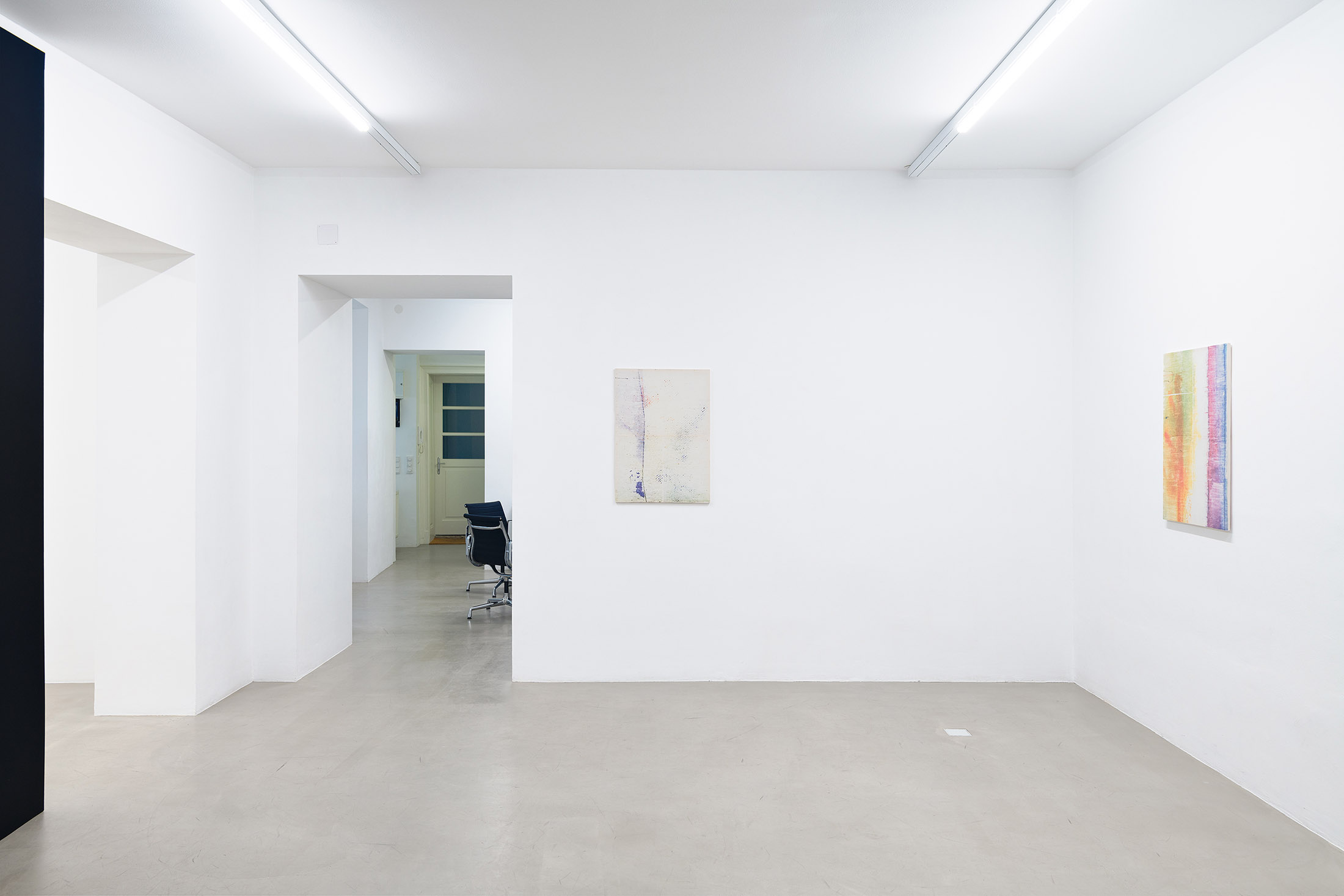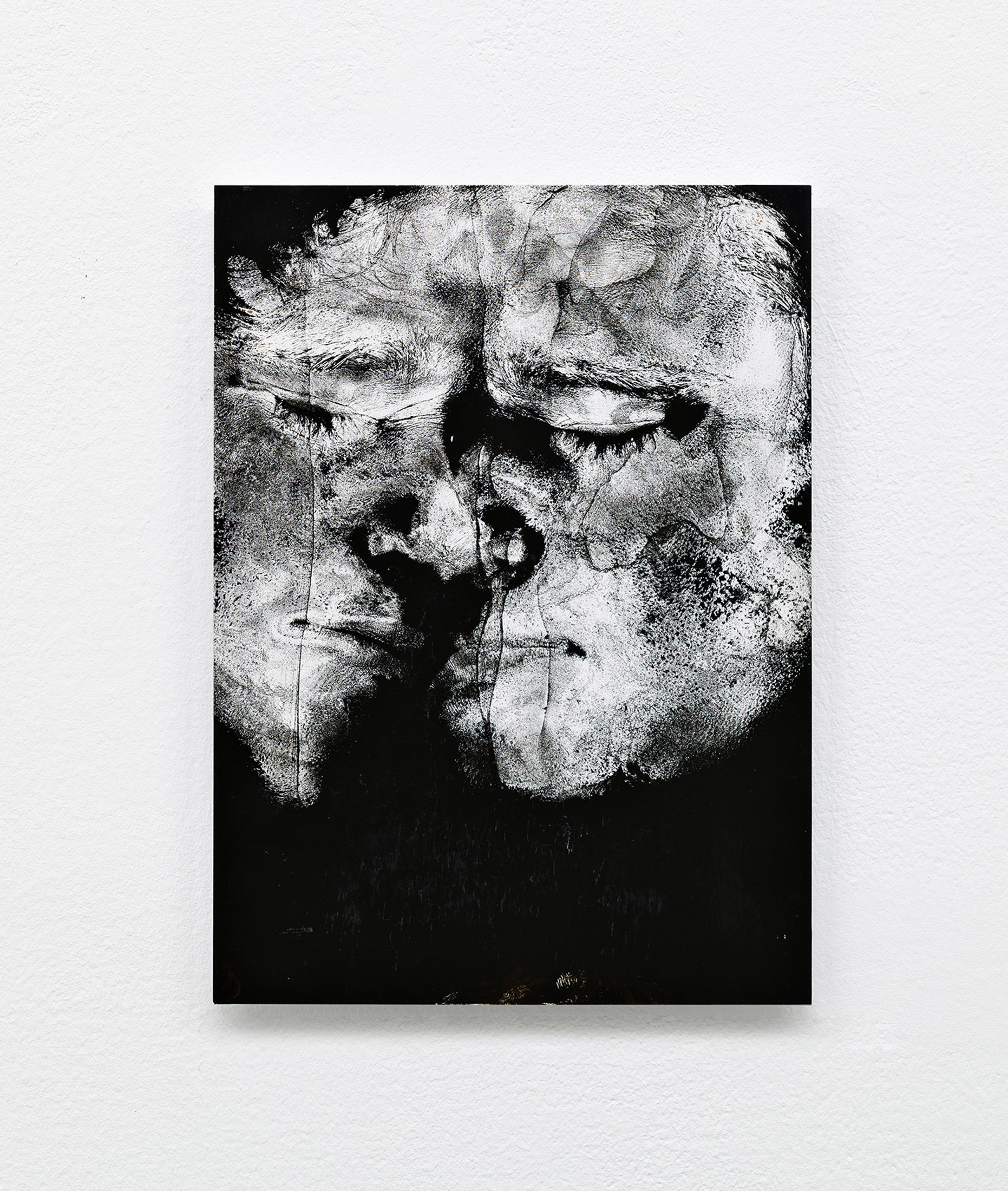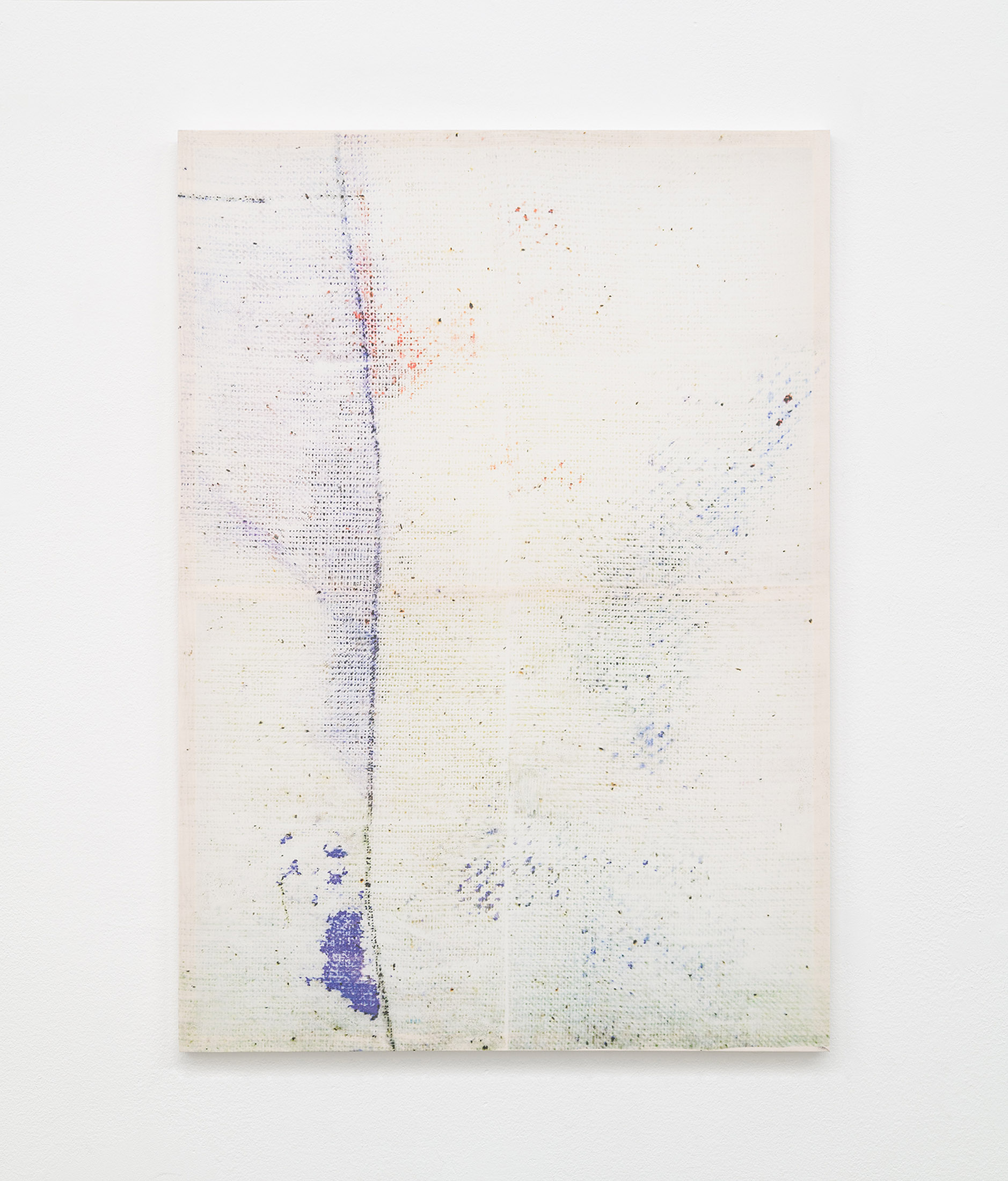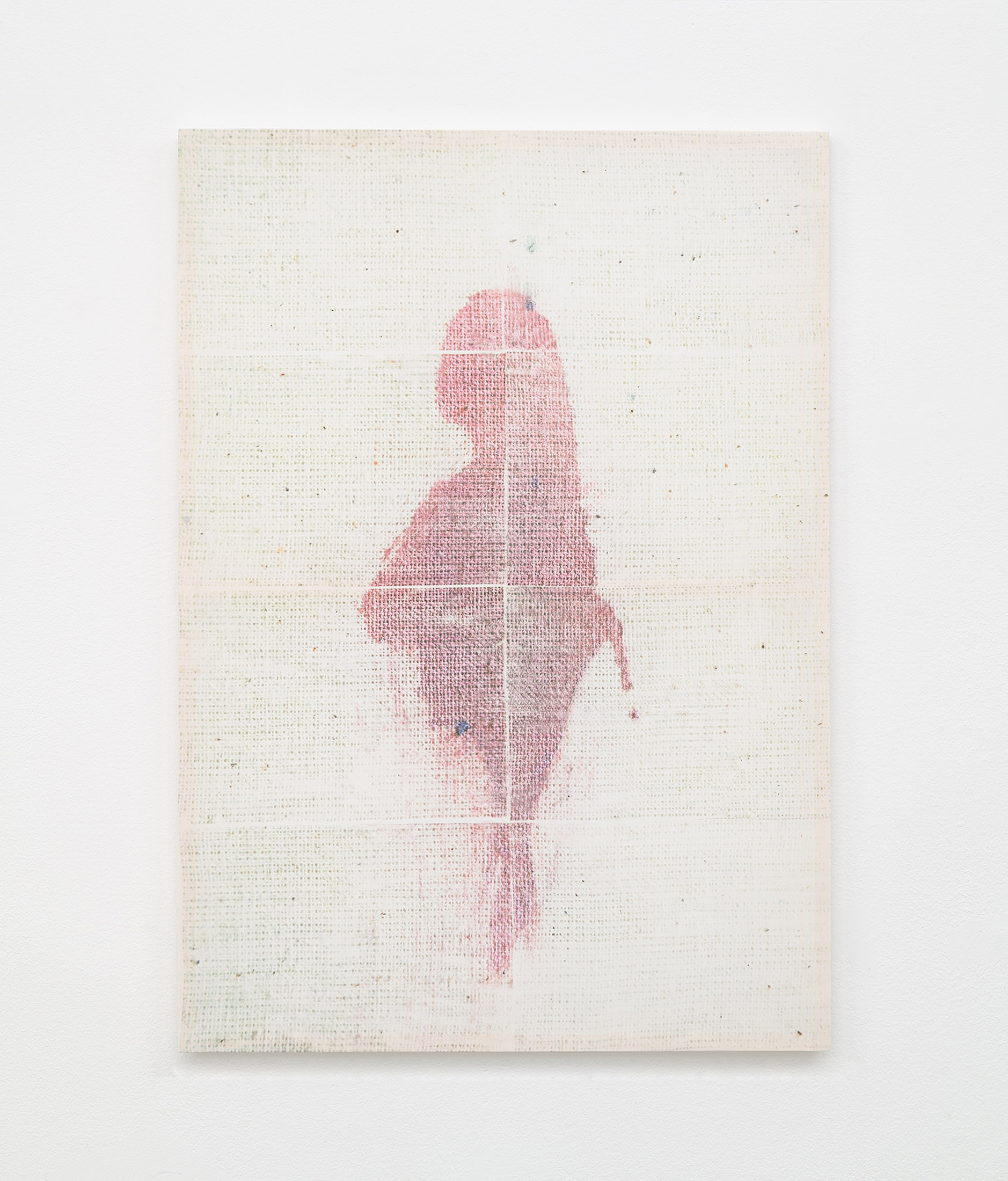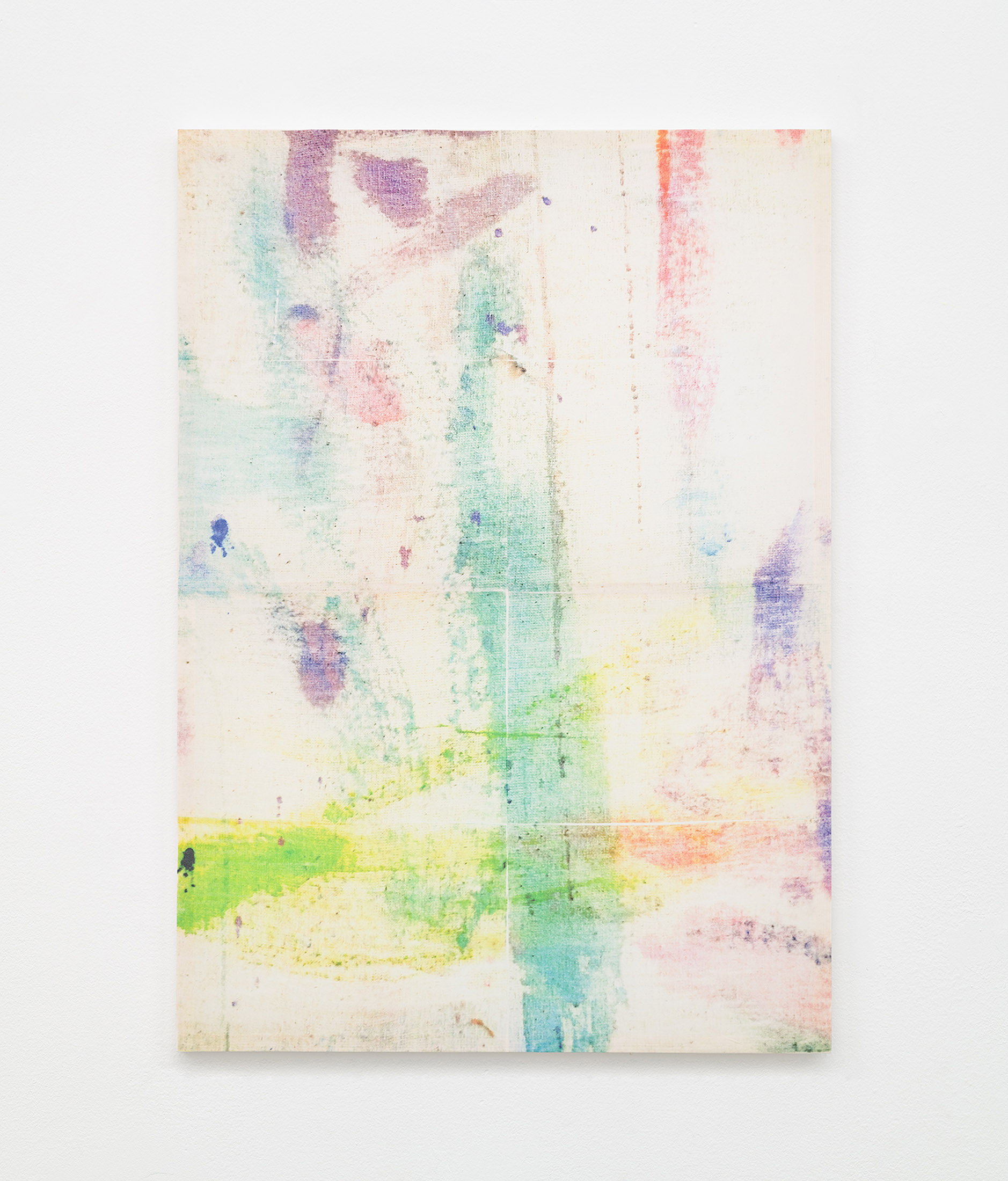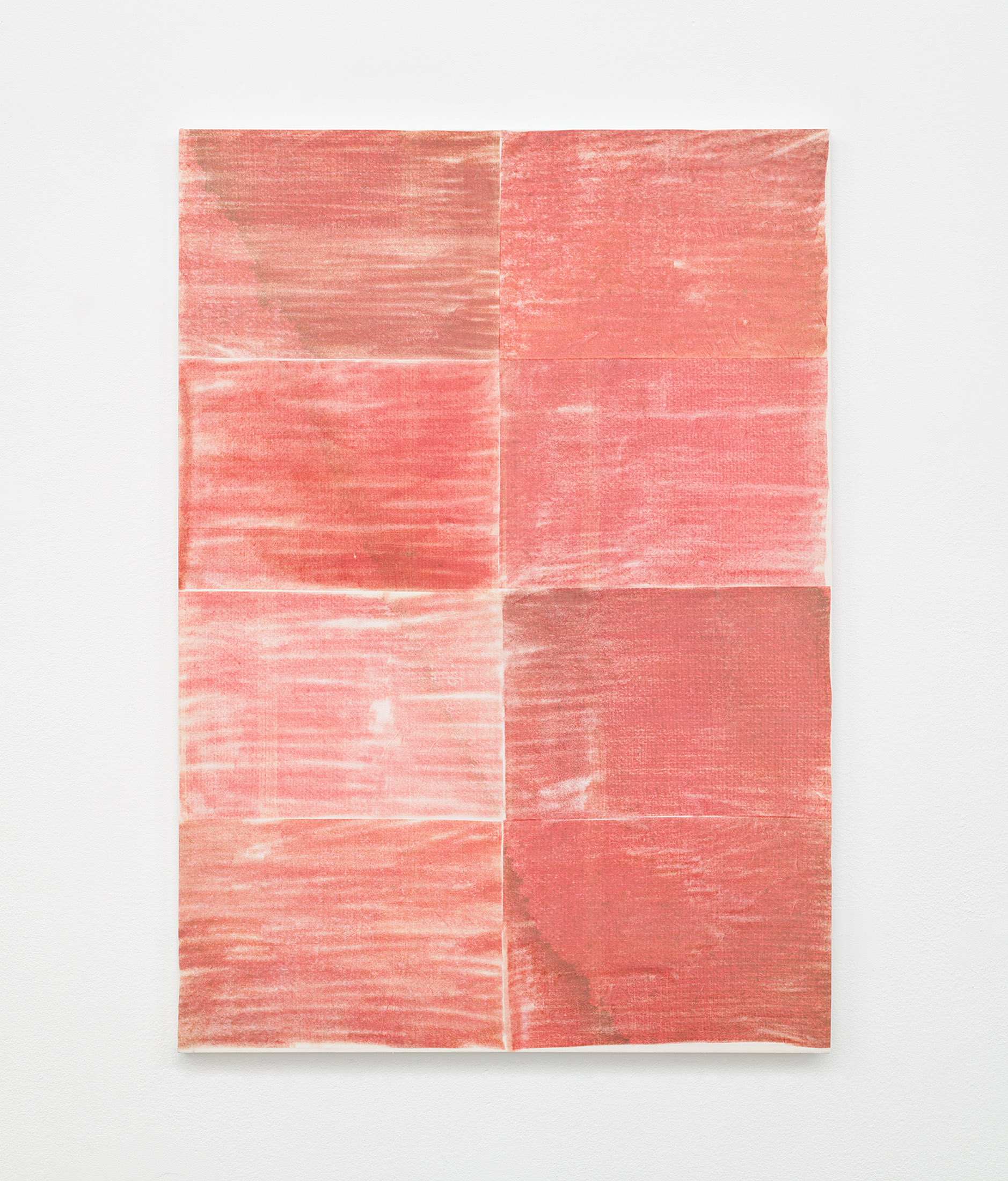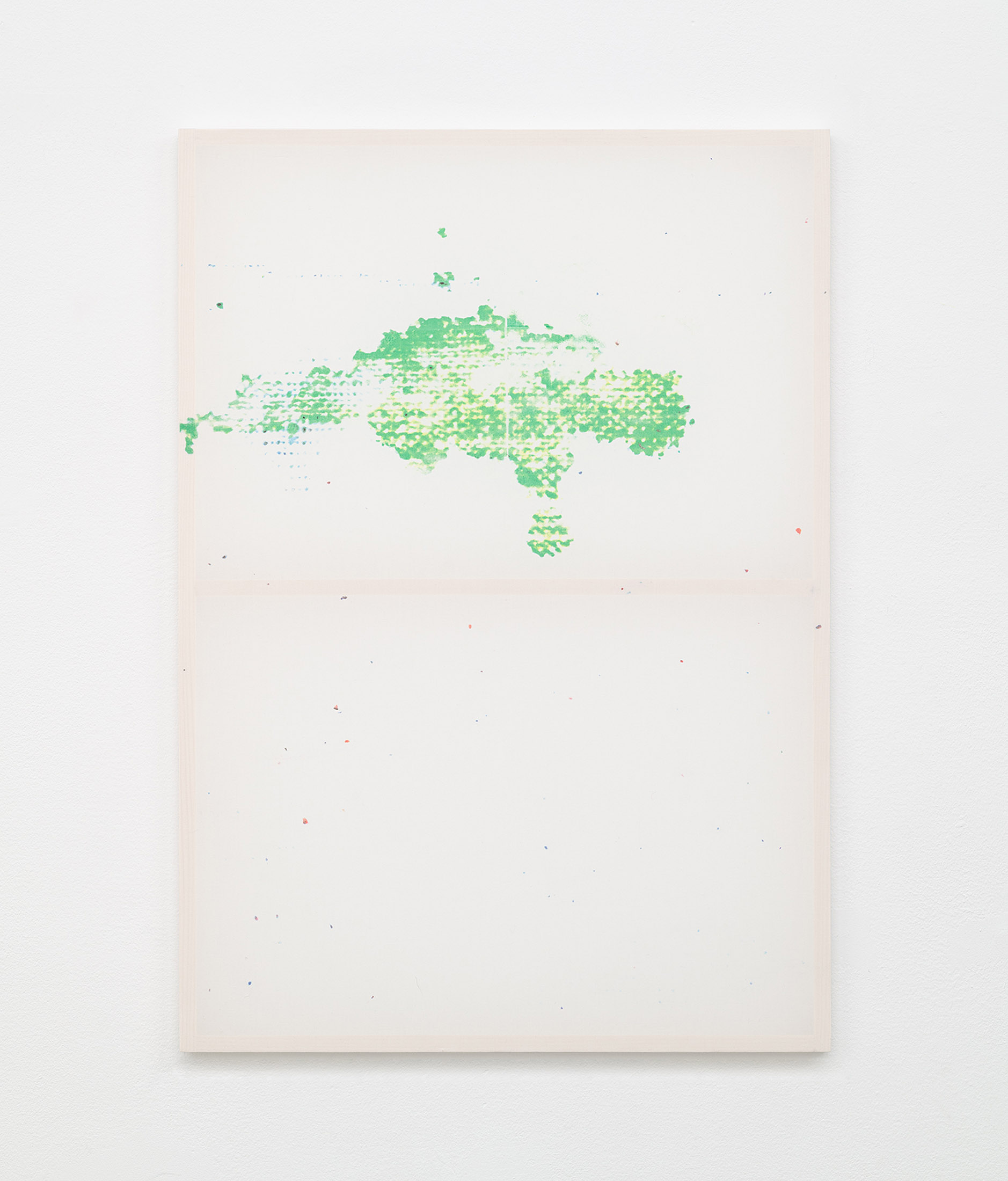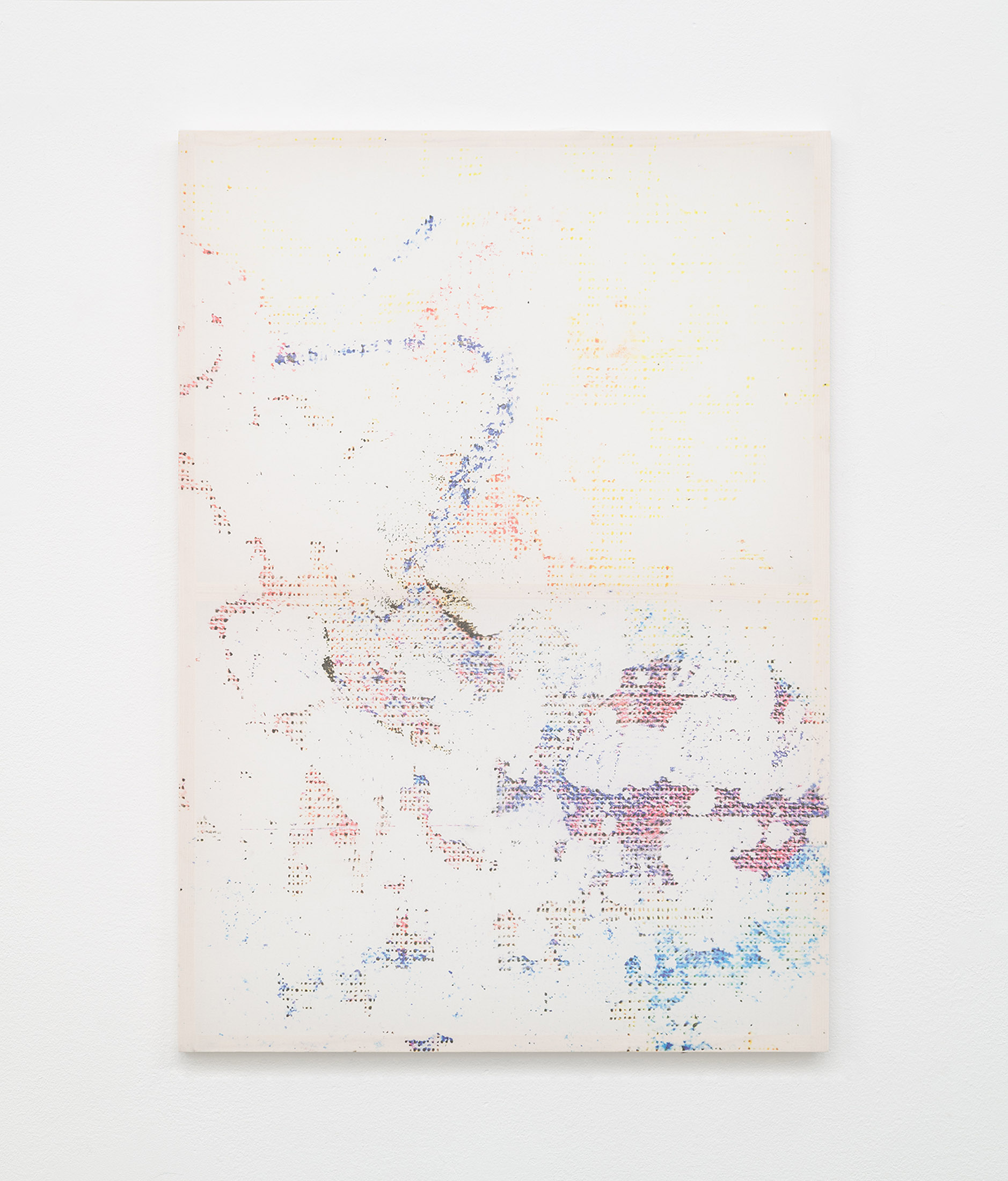Artist: Axel Koschier
Exhibition title: A EL
Venue: Wonnerth Dejaco, Vienna, Austria
Date: June 21 – July 29, 2023
Photography: Peter Mochi / all images copyright and courtesy of the artist and Wonnerth Dejaco, Vienna
Toeing Abstraction
In a corner of the canvas, as they came nearer, they distinguished a bare foot emerging from the chaos of color, half-tints and vague shadows that made up a dim, formless fog. Its living delicate beauty held them spellbound. This fragment that had escaped an incomprehensible, slow, and gradual destruction seemed to them like the Parian marble torso of some Venus emerging from the ashes of a ruined town.
As Poussin and Porbus looked on at the elder Master Frenhofer’s final painting, a fragment of familiarity pricked their senses. It was the emergent shape of Gillette’s foot and fleshy toes in which they first recognized some semblance of Frenhofer’s reputation as a genius. But everything else was a mess and impossible to reconcile within their accepted notions of painting. In Balzac’s The Unknown Masterpiece, Frenhofer devotes years of his life working on a painting that attempts to capture the “essence” of a young woman. When he finally shares the painting, an abstract image with colorful bold strokes, the two younger painters are stumped and fail to understand the work.
“Come closer. You will see the manner of working better; at a little distance it can not be seen. There I Just there, it is, I think, very plainly to be seen,” and with the tip of his brush he pointed out a patch of transparent color to the two painters.
Had Poussin and Porbus acquiesced to learn from Frenhofer’s painting, instead of dismissing it (which caused him to destroy his entire oeuvre and ultimately, his life), a radical generation of painters articulating a world which had never been imagined or seen before could have emerged. Frenhofer’s painting ultimately argues for art’s ability to express the ineffable, conjuring up a Modernism that would appear centuries later, but they couldn’t see that. Frenhofer’s genius was a romantic and hermetic idea. His genius could not be taught to the younger painters.
“The mission of art is not to copy nature but to express it!”
He painted Gillette. It was a traditional patriarchal gesture of a woman’s supposed beauty that only a heroic male genius could forge into art. Working on the painting in secret for nearly ten years, it goes from being unseen to literally being unseeable: a defeated, imperceivable, bungled swirls of chaos. The only thing that can be unmistakably clear to the two younger artists is Gillette’s toe. Roland Barthes called it the punctum, within the frame of photography. That je ne sais quoi which grabs our attention amongst all the other things taking place within the picture plane. Georges Bataille said that while our head raises up to heaven, le Gros Orteil (the big toe) is stuck in the mud, and yet still an “excessive point of deviance.” Gillette’s toe is a secret that’s willed into being by its proximity to abstraction. Just like the painting, the toe was locked up (in a boot) until its abjectness becomes public. Fatal shame falls upon Frenhofer when his secret fetish for abstraction is exhumed.
I spend a lot of time looking for cues within abstract paintings, hoping that some visual key will unlock the magic affect that artworks inspire. It’s perhaps less relevant to describe what personally fascinates me, but rather, that I am interested in the search for some kind of external significance or social confirmation that happens within abstraction. I’m not sure if something can ever be completely abstract or completely representational, but at the very least, I know the subjective readings of an artwork are produced with difference. Others perceiving the same work come with different vocabularies, canons, histories, and fetishes. We revert to looking for a fragment of familiarity, something we can grasp and safely recognize. We make comparisons, imbuing our readings with personal interpretations. And we reduce what we perceive through conjuring up our rolodex of other artists or works we’ve seen before.
Although fictional, Frenhofer comes alive through his inspiration on the work of other artists (Pablo Picasso, Paul Cézanne, Rainer Maria Rilke, more recently Anselm Kiefer, Kerstin Brätsch, Anna Ostoya…). Yet Balzac establishes Frenhofer’s death a brutal one of disidentification, as if we die from a lack of assimilation among our peers. I wonder what would have happened if Frenhofer didn’t destroy the work but sat with the next generation and rescinded the lonely pursuit of abstraction. Instead, an abstraction for everyone that opens up the ineffable to allow for a prismatic signification with sublime liberatory potential.
-Alaina Claire Feldman
Axel Koschier, A EL, installation view, Wonnerth Dejaco, Vienna 2023. © Wonnerth Dejaco and the artist. Photo: Peter Mochi
Axel Koschier, A EL, installation view, Wonnerth Dejaco, Vienna 2023. © Wonnerth Dejaco and the artist. Photo: Peter Mochi
Axel Koschier, A EL, installation view, Wonnerth Dejaco, Vienna 2023. © Wonnerth Dejaco and the artist. Photo: Peter Mochi
Axel Koschier, A EL, installation view, Wonnerth Dejaco, Vienna 2023. © Wonnerth Dejaco and the artist. Photo: Peter Mochi
Axel Koschier, A EL, installation view, Wonnerth Dejaco, Vienna 2023. © Wonnerth Dejaco and the artist. Photo: Peter Mochi
Axel Koschier, A EL, installation view, Wonnerth Dejaco, Vienna 2023. © Wonnerth Dejaco and the artist. Photo: Peter Mochi
Axel Koschier, A EL, installation view, Wonnerth Dejaco, Vienna 2023. © Wonnerth Dejaco and the artist. Photo: Peter Mochi
Axel Koschier, A EL, installation view, Wonnerth Dejaco, Vienna 2023. © Wonnerth Dejaco and the artist. Photo: Peter Mochi
Axel Koschier, A EL, installation view, Wonnerth Dejaco, Vienna 2023. © Wonnerth Dejaco and the artist. Photo: Peter Mochi
Axel Koschier, A EL, installation view, Wonnerth Dejaco, Vienna 2023. © Wonnerth Dejaco and the artist. Photo: Peter Mochi
Axel Koschier, A EL, installation view, Wonnerth Dejaco, Vienna 2023. © Wonnerth Dejaco and the artist. Photo: Peter Mochi
Axel Koschier, A EL, installation view, Wonnerth Dejaco, Vienna 2023. © Wonnerth Dejaco and the artist. Photo: Peter Mochi
Axel Koschier, Ohne Titel, 2000, photogram on Dibond, 24 × 17.5 cm. © Wonnerth Dejaco and the artist. Photo: Peter Mochi
Axel Koschier, Ohne Titel, 2023, lavender oil transfer, cotton, wood, 80 × 57 cm. © Wonnerth Dejaco and the artist. Photo: Peter Mochi
Axel Koschier, Ohne Titel, 2023, lavender oil transfer, cotton, wood, 80 × 57 cm. © Wonnerth Dejaco and the artist. Photo: Peter Mochi
Axel Koschier, Ohne Titel, 2023, lavender oil transfer, cotton, wood, 80 × 57 cm. © Wonnerth Dejaco and the artist. Photo: Peter Mochi
Axel Koschier, Ohne Titel, 2023, lavender oil transfer, cotton, wood, 80 × 57 cm. © Wonnerth Dejaco and the artist. Photo: Peter Mochi
Axel Koschier, Ohne Titel, 2023, lavender oil transfer, cotton, wood, 80 × 57 cm. © Wonnerth Dejaco and the artist. Photo: Peter Mochi
Axel Koschier, Ohne Titel, 2023, lavender oil transfer, cotton, wood, 80 × 57 cm. © Wonnerth Dejaco and the artist. Photo: Peter Mochi
Axel Koschier, Ohne Titel, 2023, lavender oil transfer, cotton, wood, 80 × 57 cm. © Wonnerth Dejaco and the artist. Photo: Peter Mochi
Axel Koschier, Ohne Titel, 2023, lavender oil transfer, cotton, wood, 80 × 57 cm. © Wonnerth Dejaco and the artist. Photo: Peter Mochi
Axel Koschier, Ohne Titel, 2023, lavender oil transfer, cotton, wood, 80 × 57 cm. © Wonnerth Dejaco and the artist. Photo: Peter Mochi
Axel Koschier, Ohne Titel, 2023, lavender oil transfer, cotton, wood, 80 × 57 cm. © Wonnerth Dejaco and the artist. Photo: Peter Mochi


